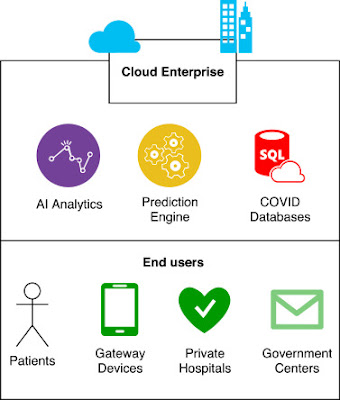The new coronavirus (COVID-19) outbreak had catastrophic consequences for the world economy and entire communities’ health. Despite the high COVID-19 survival rate, the number of severe cases that result in death is increasing on a daily basis. Patients’ survival rates should improve and fatality rates should decrease if at-risk COVID-19 patients are identified early and given preventative measures.
The Coronavirus (COVID-19) first appeared in China in December of 2020 year. Over 95 million cases had been documented over the world as of January 2021, with a fatality rate of 2% of all closed cases. ‘Its rapid pandemic spread is a global worry and a severe threat to public health and the global economy. Most countries restricted social interaction as a preventive measure, such as isolation and quarantine, to prevent the sickness from spreading. However, due to late identification and the virus’s unusual and unknown nature, many infected people could not benefit from adequate therapy. Many researchers have recently concentrated on establishing novel approaches to screen infected individuals at various stages in order to uncover noticeable connections between clinical parameters and the likelihood of succumbing to the disease.
These methods, as well as many artificial intelligence (AI) methods, are based on training. According to psychology and social literature, organisms interact with their environment by trial and error in order to get the best results. These conditions can be provided for computer programmes to interact with the environment by updating values and optimising functions based on the results of interaction with the environment to solve a problem or achieve a specific goal, based on this theory and the ability of computers to repeat a set of instructions. A training algorithm is a method for a computer to update values and parameters in successive repeats. One of these ways is Neural Networks (NN), in which software programmes are developed to handle various problems by simulating connections between neurons in the human brain.
The multi-layered-perceptron (MLP) is a widely used artificial neural network (ANN) approach for prediction and modelling. In basic and semi-complex datasets, this strategy as a single method delivers acceptable accuracy for prediction tasks. However, more robust strategies are required for performing modelling tasks in complicated datasets. As a result, hybrid techniques are becoming more popular. A predictor and one or more optimizers are included in hybrid approaches. The ICA improves initial replies over time and eventually finds the best solution to the optimization problem. Assimilation policy, imperialist competition, and revolution are all incorporated into the algorithms. This algorithm provides operators in the form of a regular algorithm that can help solve difficult optimization problems by emulating the process of social, economic, and political growth of countries and mathematical modelling of elements of this process.
ANFIS
ANFIS belongs to the artificial neural network family (ANNs). The Takagi-Sugeno fuzzy system, a variant of fuzzy logic, is integrated into ANFIS to improve its architecture [86,87]. The ANFIS was created in the early 1990s and has since grown in favour among researchers for scientific modelling and estimate. ANFIS benefits from the great performance of both computation and learning techniques for dealing with nonlinear functions because it hybridises ANNs and Takagi-Sugeno fuzzy systems.
Conclusion
SIR-based models have been frequently utilised to model the COVID-19 outbreak, although they are not without its flaws.This study presented machine learning as a new trend in improving outbreak models as an alternative to SIR-based models. The machine learning method makes no assumptions about the pandemic or infection’s transmission. Instead, it forecasts the infected cases’ time series as well as overall mortality cases.




.png)
0 Comments